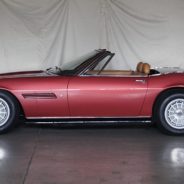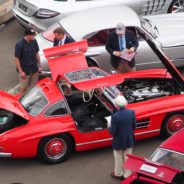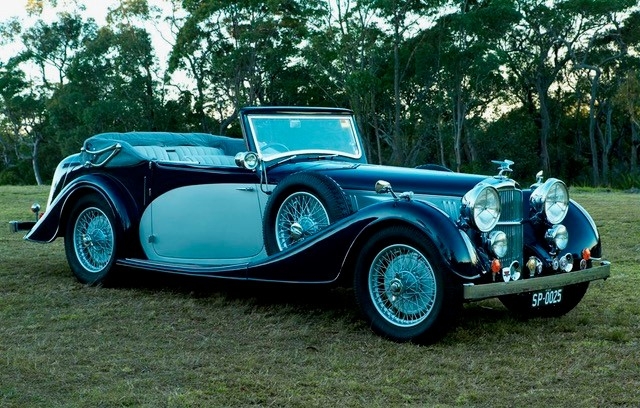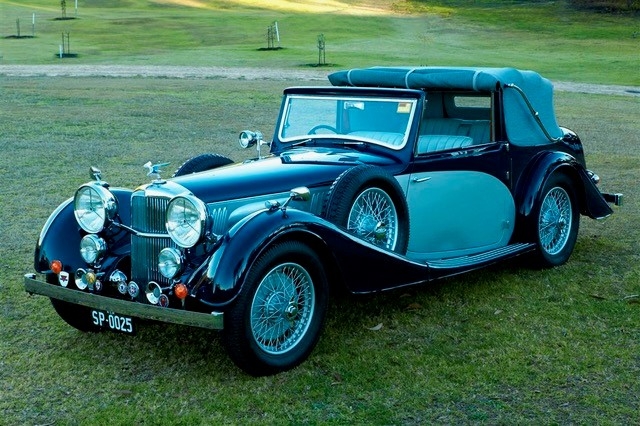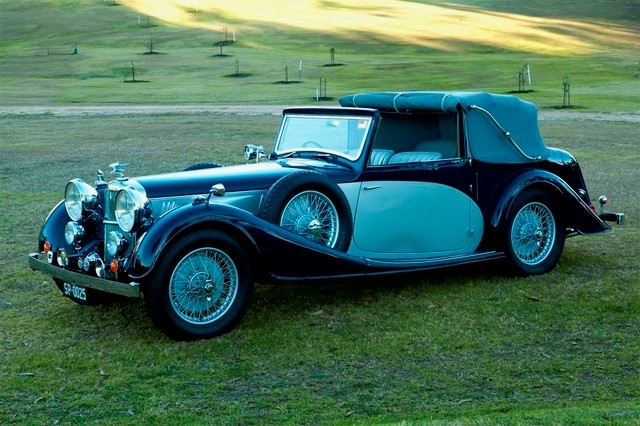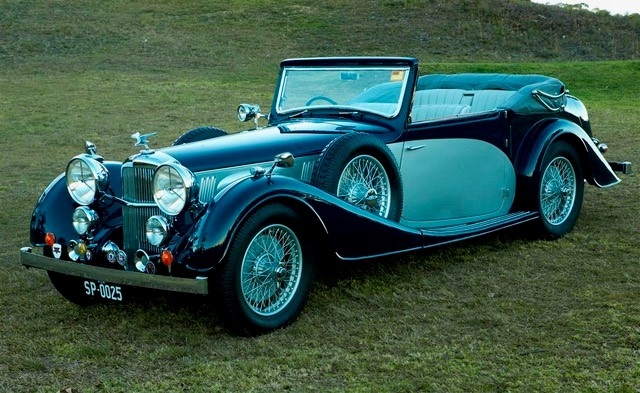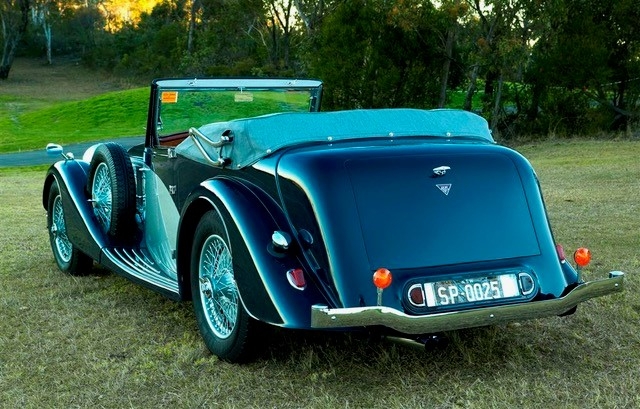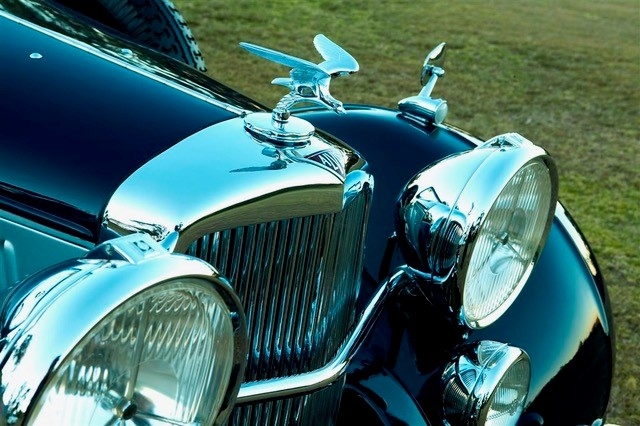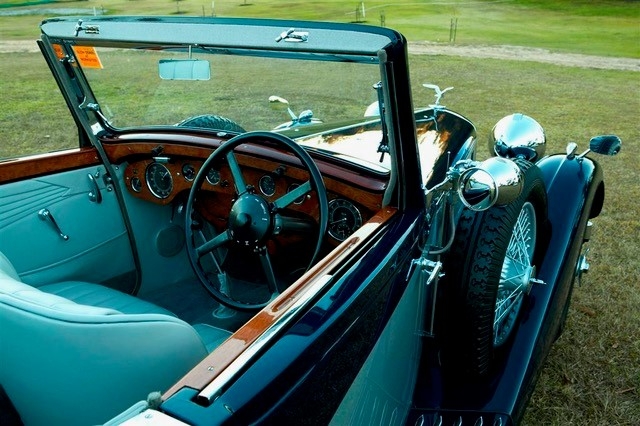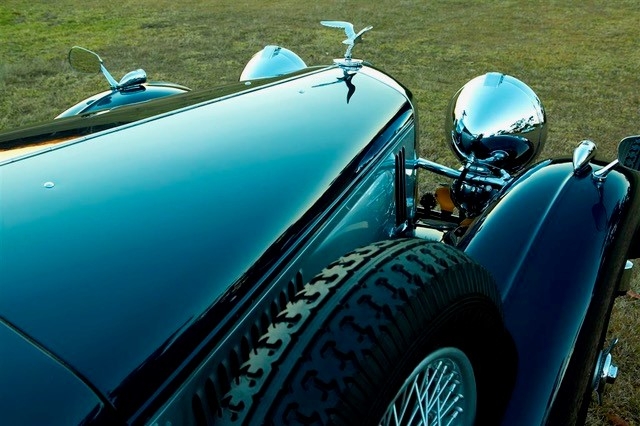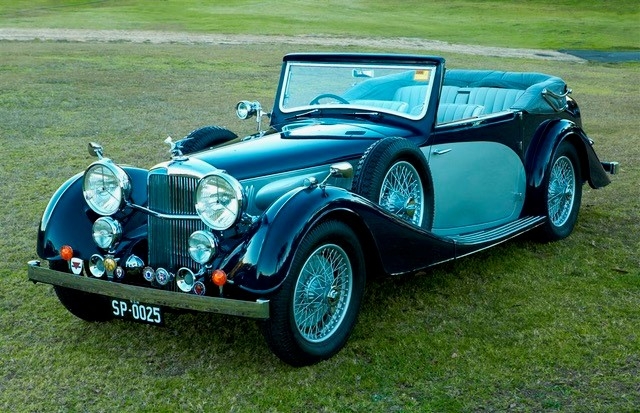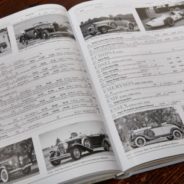Electric Avenue
I am totally sold on electric cars having just returned from a trip to the NSW countryside on behalf of Signature Luxury Travel & Media magazine. Hosted by Tesla and Crowne Plaza Hotels & Resorts (which being enlightened has charging points at all of its properties in Australia) I spent three days sampling the fantastic hospitality of Crowne Plaza whilst buzzing around in a Tesla S P100D and Tesla X P100D. Fantastic, I loved the driving experience (immediate torque and linear power), but most of all the haptic screen which controlled everything from aircon to the fab sunroof, supplied Spotify tunes to the coolest door handles, suspension to drive mode (keep it in ‘ludicrous’ rather than ‘chill’). The future’s so bright I need to wear shades!
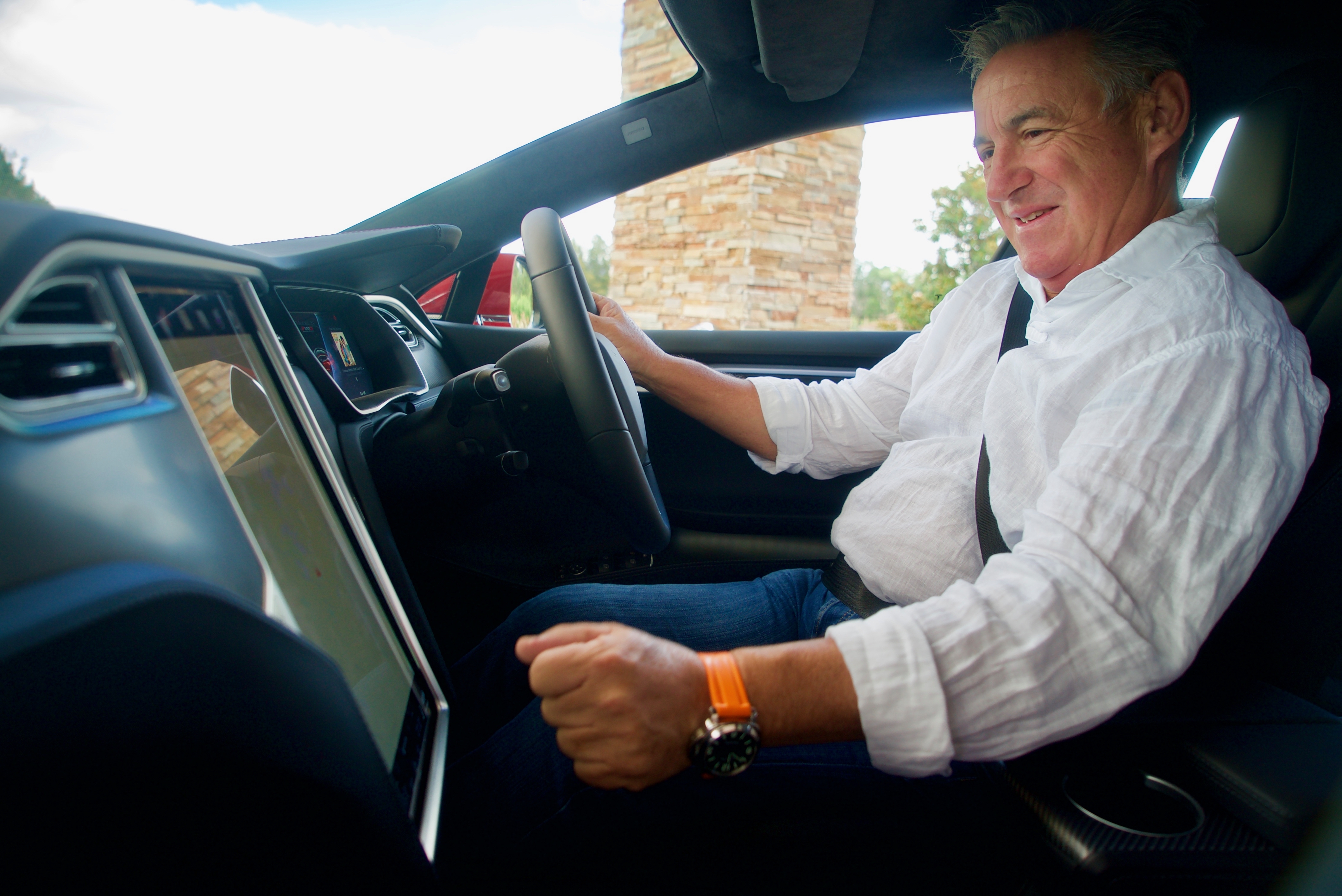
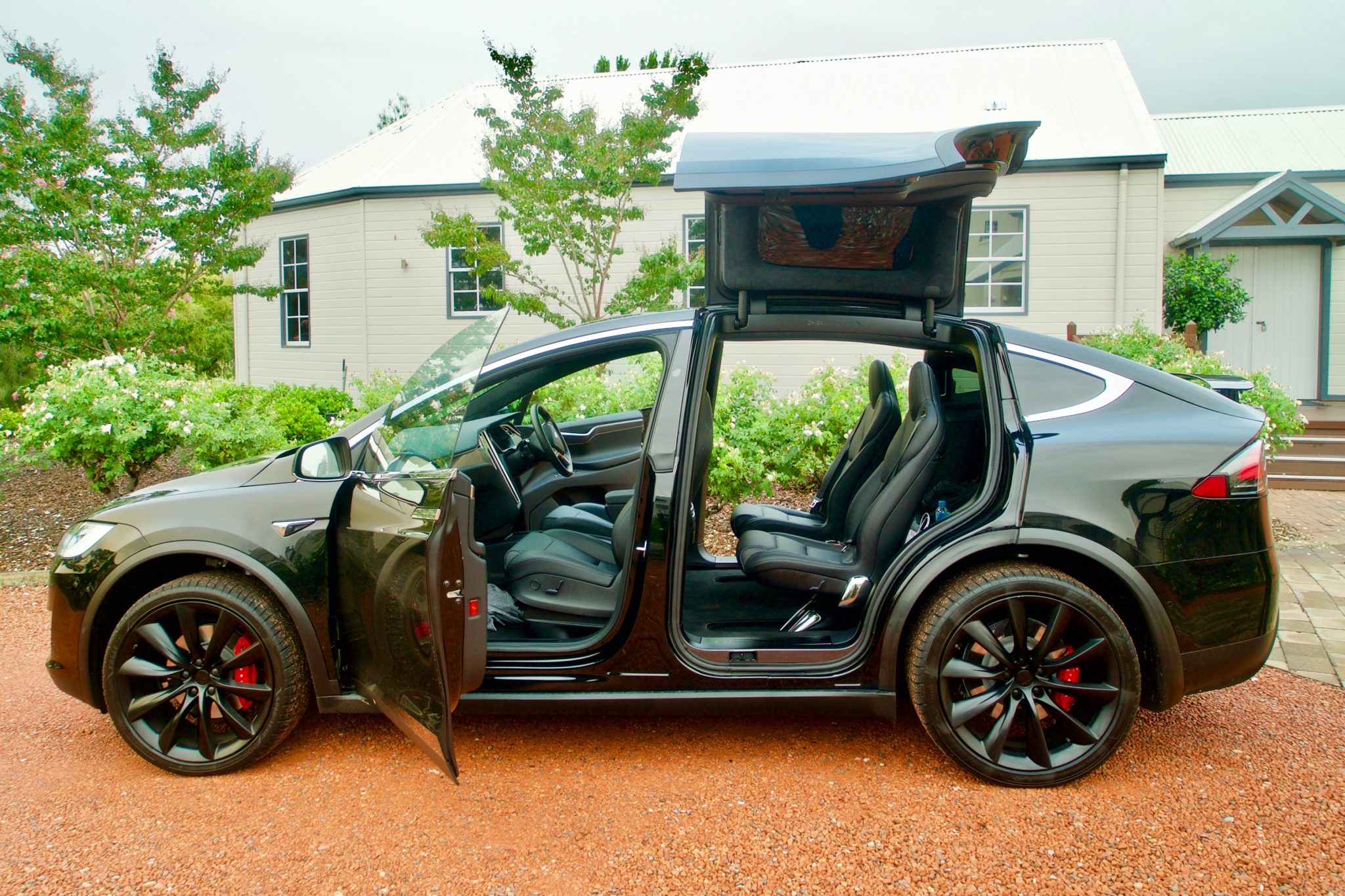

Maserati Incomparabile
1971 Maserati Ghibli SS Spyder, factory right hand drive offered for sale:
The Ghibli Spyder is perhaps even more attractive and elegant than the original coupé and is oft regarded as one of the most beautiful cars of the period. The Spyder also came with the option of a Factory hard top.
It is believed that in total 128 Spyders were produced.
82 cars were 4.7 litre of which 56 were manual and 26 automatic transmission.
There was a total of just 46 cars built to 4.9 litre SS specification with 7 automatic and 39 manual.
Of these 39 manual SS Spyders, 24 went to the USA, one to the Lebanon, and 14 built to European specification. 10 were left hand drive and just four were right hand drive cars.
This car, as documented by the Factory, is one of the four incredibly rare and desirable examples in right hand drive. It is unique however, in that it is the only one of the four delivered with a Factory hard top. This highly authentic vehicle is in excellent condition having just completed (December 2017) major restorative work.
It is now exclusively for sale via myself. If you would like to learn more about this incomparable Maserati please contact me james@marinamarini.com.au
Sydney Concours d’Elegance
Two international Concours d’Elegance took place on the weekend of 27th and 28th January 2018. Respectively they were held in Sydney, Australia, and in Palm Beach, Florida, USA. Whilst the Cavallino Classic in the States may have been a grander affair with a bigger classic car gene pool to call upon, the honour of being the first major Concours show of the year went to Sydney by dint of time difference, if nothing else.
But having said, that the quality of the 60 cars on show at the Sydney Superyacht Marina did not suffer in comparison with those on display on the other side of the Pacific. Run under the auspices of the International Chief Judges Advisory Group (ICJAG) the Sydney event not only had world class judges in the form of Chief Judge Nigel Matthews from Canada, Chris Kramer from Germany, and Siegfried Linke from the US, it also had some truly world class cars on display over the two days.

1937 Alvis Speed 25 Drop Head Coupé
- 1937 Alvis Speed 25 Drop Head Coupé
- Chassis number 19375
- Engine number 15034
The Alvis story is an interesting one. True automotive engineers, the company name should be as internationally well known as Bentley, Rolls-Royce, Aston Martin or Jaguar. Yet that is not the case for this British brand with its distinctive inverted red triangle emblem. Alvis was established in 1919 by founder T.G.John, a naval architect, and it was a manufacturer of stationary engines and motor scooters. Geoffrey de Freville who had designed a 4-cylinder engine with aluminium pistons approached John to make his engine. The first car, designated the 10/30, quickly gained a reputation for outstanding performance and quality, which was to become the hallmark of the company and its future products.
Fast, good looking vehicles were what Alvis did best and they proved themselves time and again on the racetrack. This race testing provided various innovative engineering firsts which were adopted in and adapted for Alvis road cars. In 1925 a supercharged front wheel drive Alvis lapped the famous Brooklands circuit at 104 mph. The following year Alvis designed and raced the first straight eight, front wheel drive Grand Prix car which went around Brooklands at 121 mph. Following racing success at Le Mans in 1928, Alvis developed one of the first ever front wheel drive production cars equipped with an overhead camshaft, and if the customer so desired, an optional supercharger. Alvis developed and manufactured in house a superb 6-cylinder engine which became very famous in the 1930s. The cars were technically advanced for the period and featured the world’s first all synchromesh gearbox, independent front suspension (a first for a British manufacturer) and servo assisted brakes. In 1938 an Alvis 4.3 litre, again at Brooklands, recorded a maximum speed of 119 mph, a fastest average lap of 115 mph and an average speed of 110 mph.
Not only were Alvis cars fast and well built, they were also, in the hands of some of the finest of coach builders, stunning to look at. The two door Bertelli Sports Coupé was first exhibited at the 1935 Paris Motor Show, whilst the aerodynamic splendour of the Lancefield Concealed Hood was first seen at the 1938 London Motor Show. As The Autocar magazine wrote in August 1938, “In the scheme of things there are cars, good cars and super cars, the Alvis falling definitively into the latter category.” Forget the Ferraris or the Lamborghini Miura of the 1960s, the first super car was an Alvis. Indeed, this may very well be the first time that the oft used term ‘super car’ was ever coined. The Alvis had everything going for it, “The general appearance suggests a real thoroughbred – this car is capable of a truly remarkable performance, but the manner in which this is achieved makes the Alvis doubly likeable,” wrote another journalist at the time in The Motor.
This superb example of a 1937 Speed 25 drop head coupé has been immaculately restored and prepared by marque experts, Vintage Motor Garage of NSW, Australia, founded in 1973 by Max Houston. The car had been purchased by an American pilot based in the UK, and after the second world war taken back by him to the USA. Eventually, when service and parts became a problem for him it was left in a barn on his parents’ farm in New Jersey, where it remained until found by Max Houston in 1989. Many Alvis cars of the period were fitted with coachwork by the Company’s near neighbour in Coventry, Charlesworth Bodies. This superb Alvis now sports a new aluminium replica ‘Charlesworth’ three position drop head coupé body and has undergone a complete ground up restoration completed in 2008. A concours prize winner at the All British Car Day in NSW and at the Alvis National Rally at Toowoomba in Queensland, this splendid example of English motoring royalty has the added benefit of being fitted with hydraulic power steering, Laycock de Normanville electric overdrive, specialist high compression pistons, and the Clayton Dewandre vacuum brake booster system fitted on Alvis for the first time in 1937. Its “salt & pepper” mohair soft-top, as per original, is finished with fabric roof-lining. The original and working semaphore trafficators are supplemented by indicators working off the same operational switch for added safety. This sublime motor car is fitted with many period correct Alvis options including Lucas trumpet horns located under the lights, as opposed to the standard Alvis circular button hooters, and is equipped with the highly desirable six-wheel option as offered by Alvis when new.
Mechanically, this Alvis operates as it should, still sporting its original engine – one of the legends of British pre-war motoring. Just 391 Alvis Speed 25 chassis were built in total between 1936 and the end of 1939, making it a rare beast, with this desirable and authentic example in marvellous condition being a very special motor car indeed.
Holden Premier collection
The Holden Premier was introduced in Australia by General Motors Holden and was a luxury version of the Holden range starting in 1962 with the EJ Holden and finishing in 1979 with the HZ series.
The collection has been amassed over 28 years and features a stunning example of the 11 different premier models produced by GMH.
The Vickers Holden Premier Collection is housed at the WA Motor Museum Whiteman Park and boasts a superb example of Australian motor history.
Each car has been carefully handpicked from all over Australia & New Zealand with all vehicles being one previous owner, low mileage & log books
This very rare collection is For Sale and would suit the astute investor or self managed super fund.
The owner is looking at offers over AUS $1 Million
More information: premiercollection4sale.com.au
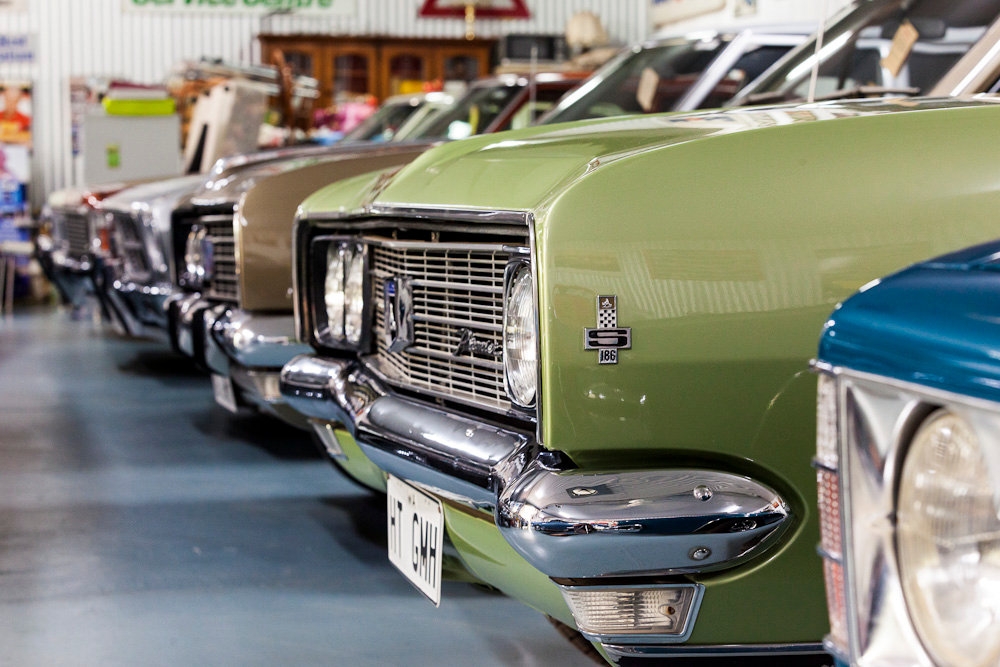
Book 2
The New Edition of the Classic Car Auction Yearbook by Adolfo Orsi and Raffaele Gazzi reports on the 2016-2017 Season with unprecedented statistics showing long-term gains and how to interpret today’s buyer’s market. Since 1994, the Classic Car Auction Yearbook has been the ‘bible’ of the collector car market offering readers an unparalleled, in-depth analysis of top international auction sales data, following how important cars, marques and models have performed among a variety of scopes. Published in Italy, the entire book is written in English.
Chapters in the 2016-2017 edition include the Market Analysis; Authors’ comment with 18 color graphs; Graphs of the prices achieved by cars offered and sold in earlier time (by specific chassis in three currencies); The Top 195 cars of the 2016-2017 season; Top 100 for make & country statistics; Statistics for make; Average price achieved graphs; the 2016-2017 season “TOP TEN” with case study; Auction season results with 5,659 cars (of 308 makes); 24 years of TOP FIVE; 24 years of TOP FIVE for Makes; and TOP TWENTY of the last 24 seasons.
To order a copy of this book please contact me directly at james@marinamarini.com.au. Cost 70euros plus p&p.
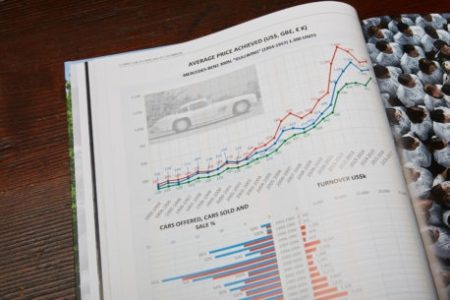
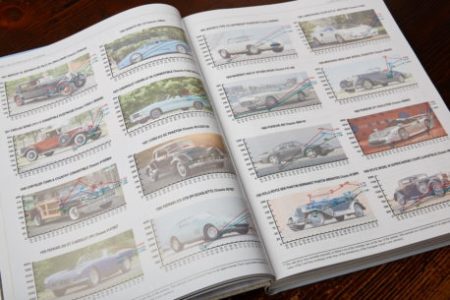
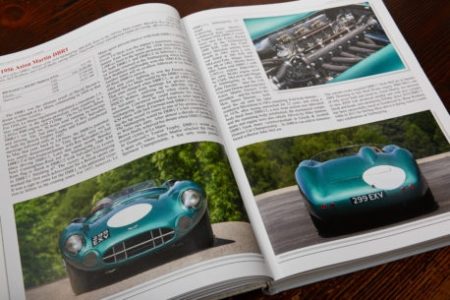
Book Review
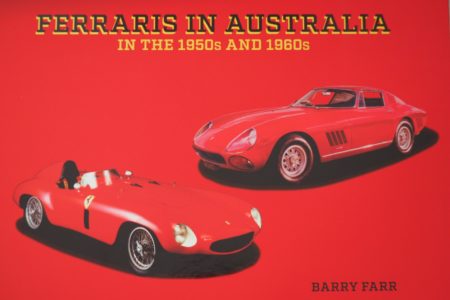
2017 was of course the year of Ferrari, as one of the most recognised luxury brands on the planet celebrated its 70th glorious year. There were of course lots of illustrious publications on offer to celebrate the marque’s milestone birthday.
One slightly esoteric, but nonetheless welcome addition to the Ferrari canon is Barry Farr’s ‘Ferraris in Australia in the 1950s and 1960s’, a large format landscape (380mm x 300mm) work of 176 pages which catalogues Ferraris as per its title. Sydneysider Farr became a tifoso at the age of just eight when his father took him to the Gnoo Blas circuit near Orange in New South Wales in January 1955. It was there that he saw Dick Cobden racing the ex-Peter Whitehead 1949 Ferrari 125 F1 and Whitehead himself driving the Ferrari 625 F1. Whitehead was the first person to whom Enzo Ferrari sold a racing car, the green 125 driven by Cobden, and in which in Czechoslovakia he became the first Briton to win a major overseas race since the tragic golden youth, Richard Seaman won the 1938 German GP. Whitehead though had won the Australian GP and the Australian Hill Climb Championship in that same year and would also go on to win the legendary Le Mans 24 hr endurance race in 1951.
It is that sort of book that leads one on, from race to race, and from name to name, and all the greats crop up eventually. Farr’s register, for that is what is rather than a history per se, attempts to provide a comprehensive record of all the Ferrari cars that either came into Australia during the 1950s and ‘60s, or made fleeting visits for specific race meetings or became so desirable that they went back overseas at a later date.
Farr’s research is comprehensive, taking in a large variety of publications and period source material, though surprisingly perhaps for a work of this nature there is no bibliography. In all there are just 65 examples of the Cavallino Rampante, the famous symbol of Ferrari, whether or not the car was in Australia for only a brief time during the period, or still resides here. The first Ferrari arrived in Australia in 1952, a brand new 212 Inter Berlinetta with coachwork by Vignale of Turin. Originally in daffodil yellow with tan pigskin interior, we are told, the car after a very interesting life still remains in Australia but since 1959 it has sported eponymous red paint.
Be it sports, race or road car all are included however briefly its time in the Big Southern Land. Some such as the F1 car driven by the legendary Alberto Ascari at Monza in 1952 and subsequently by WWII ace and Australia’s first F1 Grand Prix driver, Tony Gaze in this country, are provided with detailed photographic references. So too, the wonderful 1960 250 GT PF coupé by Pininfarina purchased new by yachtsman and Bushell’s tea heir Tony Oxley in October that year. Featured on the front cover of Autosport magazine in March 1961, this car remains still in the Oxley family, though currently I believe it is in Europe for restoration. For some others unfortunately, such as the 1964 330GT 2+2 delivered in October 1964, the fate is unknown. Of course, period photographs can be lacking in quality on occasion but if I have one small criticism of this excellent volume it is that the modern images on occasion also lack the quality of resolution that one might expect.
Having said this, this is an excellent book filling an important gap from the earliest days of the marque in Australia until the inauguration of the Ferrari Club in Australia in 1972 and the arrival of the ‘Daytona’. Australia has a very important connection to Ferrari, with W.H.Lowe being the Company’s first appointed representative outside of Europe, just five years after the first Ferrari departed the gates at Maranello, and the Ferrari Club of Australia also being one of the oldest in the world. Barry Farr, who still owns his first and only Ferrari, purchased in January 1990, is to be commended on this work, which in true Ferrari fashion is a limited edition of just 299. Price Aus$175 + p&p available from barry.farr09@gmail.com.
The reviewer, James Nicholls was a member of the Jury for the Ferrari 70th Anniversary Concorso d’Eleganza at Maranello, a guest speaker at the official Ferrari 70th celebrations in Melbourne and has been described by Ferrari Australasia as the “respected international classic car specialist”.
2018
Happy New Year dear readers. I trust you have had a good Christmas and all the very best for 2018.
I was on the water on Boxing Day for the start of the 73rd 628 nautical mile Rolex Sydney Hobart Yacht Race and an eventful and fast one it was too. Pictured here is the super maxi Black Jack – first out of Sydney and third into Hobart.

Coming up for the first part of 2018 I am planning on covering the following events. If any editor has any particular requirements or requests please let me know:-
January – Sydney Concours d’Elegance and Supercar Show
February – 21 Gun Salute International Vintage Car Rally and Concours Show, Delhi, India.
March – Speed Week and World Speed Trials, Outback South Australia
April – Classic Wooden Boat Festival, Sydney
April – Fullerton Car Show, Singapore
May – Beach Racing, NSW
May – Classic Boat Rally, Venice
May – Villa d’Este Concorso d’Eleganza, Lake Como, Italy.
Blowering Dam
On the 40th anniversary of Ken Warby breaking the World Water Speed Record, his son David was out testing Spirit of Australia II, designed by Ken, for his own record attempt in 2018. Blowering Dam in country NSW, Australia was and will be the venue as David builds up from his current best of (only!) 172 mph in his quest to go past the still existing mark of 317.60 mph!
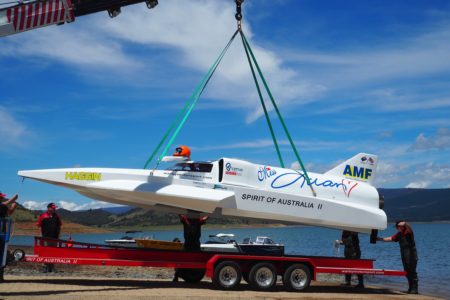
Unloading Spirit of Australia II
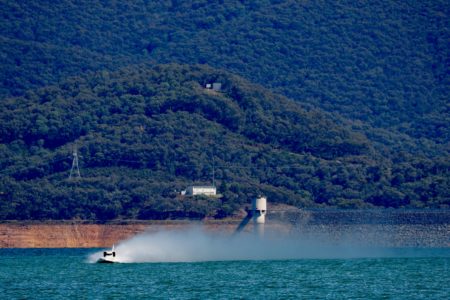
172 MPH!
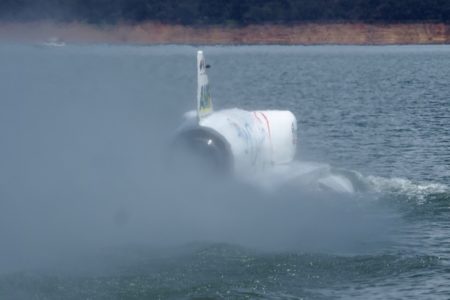
The Rolls-Royce Orpehus jet engine is engaged!
Crashlab!
The other day I was lucky enough to pay an interesting and informative visit to Crashlab to watch an ANCAP crash test on a new vehicle. It was also quite intimidating, but luckily on this occasion they did not choose me to be the dummy.

If you want to know why a five star rating is important, look no further than this video link!

